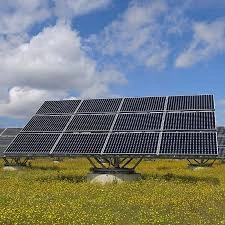Cost of Solar Panels for a Three-Bedroom Family Home
Understanding Solar Panel Costs for a Three-Bedroom House
As more homeowners consider sustainable energy solutions, solar panels are becoming increasingly popular. A three-bedroom house is a common size in many neighborhoods, making it an ideal reference point for evaluating solar panel costs. This article will delve into the factors influencing the price of solar installations and provide an overview of what homeowners can expect to pay.
Initial Costs of Solar Panels
The cost of solar panels for a three-bedroom house can vary significantly based on several factors. On average, the installation of solar panels can range from $15,000 to $25,000 before any tax credits or incentives. This price typically includes the solar panels themselves, inverter systems, mounting hardware, and installation labor costs.
1. Type of Solar Panels There are generally three types of solar panels available monocrystalline, polycrystalline, and thin-film. Monocrystalline panels are the most efficient and, therefore, usually the most expensive. Polycrystalline panels are slightly less efficient but are more budget-friendly. Thin-film panels tend to be the least efficient and have a shorter lifespan, making them the least popular choice.
2. System Size The size of the solar power system necessary for a three-bedroom house largely depends on the household's energy consumption. On average, a three-bedroom home may require a system that produces between 6 kW to 8 kW. The larger the system size, the higher the upfront cost. However, investing in a larger system can lead to greater long-term savings on energy bills.
3. Installation Complexity The complexity of the installation process can also affect costs. If the roof has unique features, such as multiple levels or orientations, or if the installation requires additional equipment like battery storage systems, the labor costs may increase.
Incentives and Rebates
Many homeowners are unaware of the various incentives available to subsidize the costs of solar panel installations. In the United States, the federal solar tax credit, also known as the Investment Tax Credit (ITC), allows homeowners to deduct a significant percentage of their solar system costs from their federal taxes. As of 2023, this percentage is set at 30%, which can result in substantial savings.
solar panel cost for 3 bedroom house

Additional state and local incentives may also be available. These can take the form of rebates, tax exemptions, or even performance-based incentives. Homeowners should research what is available in their area, as these incentives can significantly reduce net costs.
Long-Term Savings
While the initial costs of installing solar panels can be high, homeowners often see a return on investment in the form of reduced energy bills. On average, a three-bedroom house can save between $1,000 to $2,000 annually on electricity costs. Over a 25 to 30-year period, this can lead to savings ranging from $25,000 to $60,000, depending on energy rates and consumption patterns.
Furthermore, solar panels can increase the home's value. Real estate studies have shown that homes with solar energy systems sell for more than those without. As renewable energy sources become more popular, potential buyers view solar installations as an attractive feature.
Maintenance Costs
Another important factor to consider is the maintenance costs associated with solar panels. Generally, solar energy systems require minimal maintenance. Regular cleaning of the panels and occasional inspections are necessary to ensure optimal performance. Many manufacturers offer warranties that cover production and parts, often up to 25 years. This reliability adds to the appeal of solar investment for homeowners.
Conclusion
Investing in solar panels for a three-bedroom house can be a wise financial decision, particularly when considering the long-term savings on energy costs and potential home value increase. While the upfront costs can seem daunting, available incentives can make solar energy a more affordable option. Homeowners are encouraged to weigh their energy needs, research their local incentives, and consult with solar providers to determine the best system for their home. Ultimately, solar energy not only benefits the individual homeowner but also contributes positively to the environment, making it a choice worth considering.
-
String Solar Inverter: The High-Efficiency Solution for Smart Solar EnergyNewsJul.14,2025
-
Revolutionizing Rooftop Energy with the Power of the Micro Solar InverterNewsJul.14,2025
-
Power Independence with Smart Off Grid Solar Inverter SolutionsNewsJul.14,2025
-
On Grid Solar Inverter: Powering the Future with Smart Grid IntegrationNewsJul.14,2025
-
Monocrystalline Solar Panels: High-Efficiency Power for the Future of Clean EnergyNewsJul.14,2025
-
Bifacial Solar Panel: A Smarter Investment for Next-Generation Energy SystemsNewsJul.14,2025







